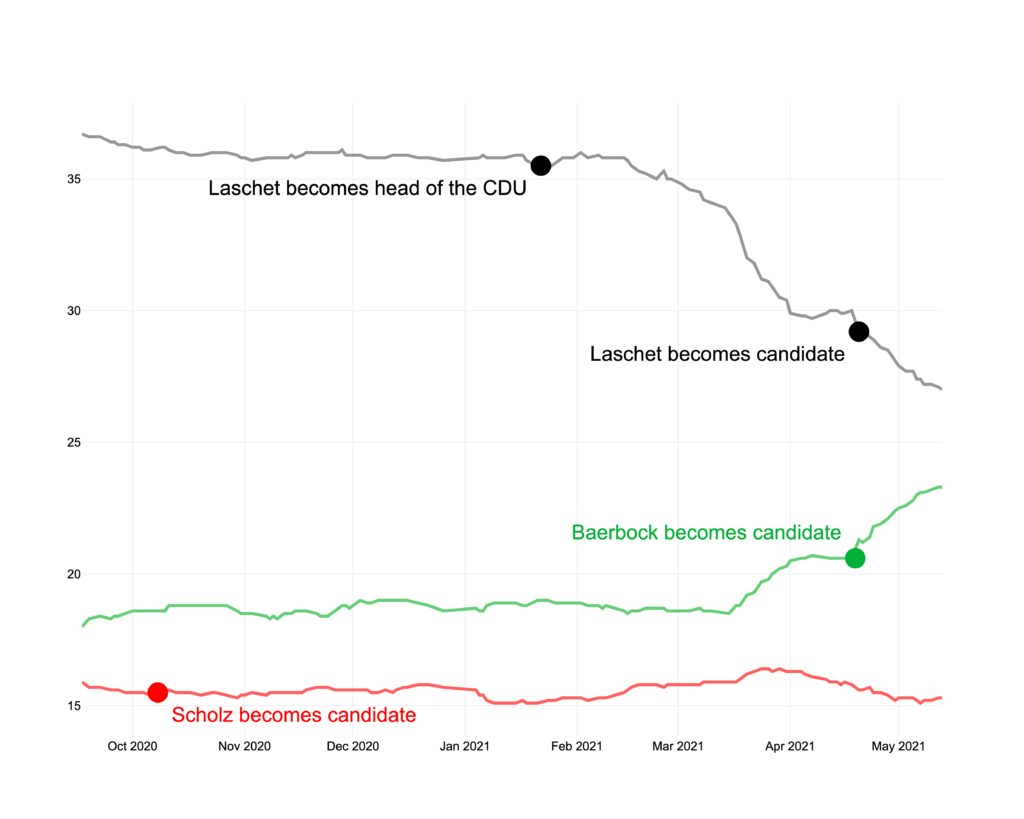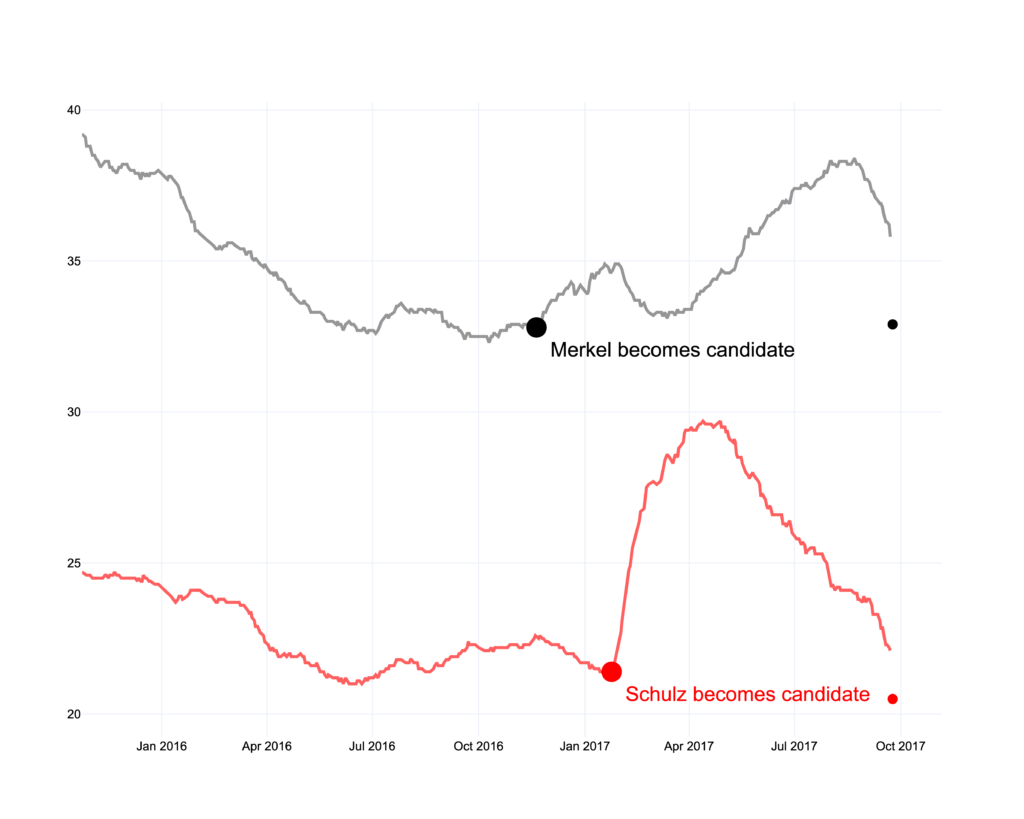In my post from March, I boldly (read: foolishly) staked my claim about how I think the German election will go down. My take hasn’t really changed all that much, though there has been a significant shift in the polling numbers in favor of Die Grüne and away from the CDU/CSU. Time will tell whether the Greens can keep their strong momentum going and whether polls are accurately capturing the electorate at this moment in time. My model is still bearish on the Green’s chances.
One argument I make at the end of that post is that candidates don’t really matter all that much. Since I wrote that post, there have been two announcements of candidates for the chancellorship:
- Armin Laschet, head of the CDU, has become the designated candidate for the CDU/CSU
- Annalena Baerbock, co-head of die Grüne, has become their designated candidate
(Both of these candidates still have to be officially confirmed by their party, but this is a formality.)
Low impact: Laschet & Baerbock’s candidacy announcements

At first glance, it looks like these candidate announcements mattered quite a bit. I still believe that the actual effect was marginal, at most. The data looks to me like the existing trends simply continued on and would have done so with or without the candidate announcements.
Armin Laschet has been the CDU/CSU’s de-facto candidate since he became the head of the party back in January. Though there was a bitter contest between him and Markus Söder, head of the CDU’s Bavarian sister party the CSU, the downturn in poll numbers started two months before he became the candidate. The Christian Democrats’ popularity was both damaged by a corruption scandal (involving the procurement of masks) and their handling of the coronavirus pandemic.
For Baerbock, the reverse is true. The Greens had been gaining in popularity for a month before her candidacy was announced. Though they had a very orderly announcement process (in stark contrast to the CDU/CSU), their star was on the rise already.
The counter-argument would be that Laschet wasn’t able to stop his party’s downturn in the polls and that Baerbock’s candidacy spurred the Greens to go even further. This would be to argue that the absence of an effect is the effect. I am skeptical of this, since the data shows a clear trend before the announcement that continued at a similar pace afterwards.
Additionally, both Laschet becoming head of the CDU back in January and Olaf Scholz becoming the candidate of the SPD back in October had no real impact on the polls. If the former’s announcement had been such a drag on the poll numbers, there would have been earlier signs of a downturn.
What lessons 2017 can offer
Looking at the last election cycle, the argument that this year’s candidate announcements had little to no effect, and that candidates don’t matter much to begin with, becomes even stronger.

How was 2017 different from 2021? You can see in the chart above that there was a lot of movement in the polls after Martin Schulz became the SPD candidate for chancellor in January. The SPD increased their support in the polls by almost 50%. None of the candidate announcements for the 2021 election had anywhere close to such an effect.
But 2017 ends up offering another lesson on why candidates don’t matter. In the chart above, the dot on the far right represents the final election result for both parties. Both the CDU/CSU and the SPD ended up (down to less than one percent) where they had started when they announced their candidates. Especially for the SPD, Martin Schulz was not able to actually shift the fundamental popularity of his party. For the CDU/CSU, the story is more complicated in that election. In the case of the SPD, I think we can see a clear argument of why candidates have a hard time moving the needle at all.
Too much spotlight for the candidates
I’d like to stress one final point. Since candidates have little to no effect on a voter’s decision, I think the media coverage should be adjusted accordingly. The three candidates for chancellor, Annalena Barbock, Armin Laschet and Olaf Scholz, have received a lot of media attention with media outlets running multiple profiles over the course of several weeks. This seems disproportionate to their relative importance to voters and the outcome of the election. Perhaps focusing on issues that matter more to voters (for example: differences between the parties in handling the pandemic or cases of corruption) would serve the electorate better.
With the candidate announcements out of the way, we’re now firmly in the home stretch of the German 2021 federal election. The only major development left is the ongoing covid-19 pandemic. With an accelerating vaccination campaign and the easing of restrictions, this has a lot of potential to shift the current dynamics of the race. Whichever way it goes, the race continues to look extremely close. For the latest predictions, check out the model page (updated weekly).
While you’re here…
Like what you read? Feel free to share this post (and ask me questions) on Twitter and LinkedIn. Or, send me an email.